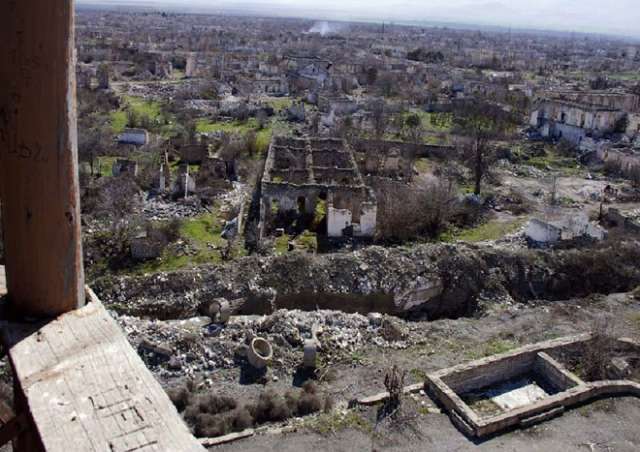The Press and Journal: What happened in Aghdam is genocide against Azerbaijanis

“Personally, I am in no doubt that what happened to the Azerbaijani people in Aghdam and other towns was genocide,” said in his article the author, who visited the Azerbaijani town of Aghdam occupied by the Armenians. “Little wonder Aghdam has been dubbed the “Caucasian Hiroshima.””
“I was headed to the infamous town of Aghdam which up until 1993 had been a thriving town in Azerbaijan, population 40, 000,” said the author. “It’s now a ghost town, devoid of all human life. My driver started to get nervous, even though he knew exactly where he was taking me. Total devastation is all around. As we ventured deeper into the town, my driver got more and more nervous, those 20 Euros he had been happy about getting now seemed to be not worth it.”
The article said that the only thing left standing is the central Mosque.
“I asked him to make his way there,” the author said. “He kept driving while repeating, “No good my friend, no good.” A hundred meters from the Mosque, he killed the engine and I got out. Looking around I saw no one, there was an eerie calm. I walked up to the Mosque, bullet holes and pieces of it lying on the ground. I stepped inside where I encountered a distinct smell of animal manure. Totally derelict, its once stunning interior stripped of everything sacred. I cannot imagine the heartache this must cause for people who once lived and worshipped there. I climbed the inner stairs, my every step making a loud crunching sound. From up high, I looked out over the deftly quiet ruined town.”
The author thinks that the Armenian people themselves are very uncomfortable about what happened here. “Aghdam is not something they are proud of and don’t talk about it,” the author said.
“I took photos, but didn’t stay long as my increasingly nervous driver pointed to his watch, indicating that’s enough, let’s get out of here,” the article said. “As I’ve already mentioned, going to Aghdam would soon turn out to be the biggest mistake of my life. I had been followed and photographed there. In fact, as I later found out, I had been followed all week. The very people I thought I had talked with and asked questions, had in fact been asking me questions and reporting back.”
Recently, the official newspaper of Bashkortostan (Russia) published an article by Elsa Baymuhametova “One homeland for two states” that encourages separatist regime of Nagorno-Karabakh.
The author`s report reflects only the point of view of Karabakh separatists regarding the history of the conflict, and today’s Nagorno-Karabakh is described in very optimistic colors. The article of the Scottish newspaper completely contradicts the rainbow story of the Bashkir reporter, describing the real situation on the occupied Azerbaijani territories.
The conflict between the two South Caucasus countries began in 1988 when Armenia made territorial claims against Azerbaijan. As a result of the ensuing war, in 1992 Armenian armed forces occupied 20 percent of Azerbaijan, including the Nagorno-Karabakh region and seven surrounding districts.
The two countries signed a ceasefire agreement in 1994. The co-chairs of the OSCE Minsk Group, Russia, France and the US are currently holding peace negotiations. Armenia has not yet implemented the UN Security Council`s four resolutions on the liberation of the Nagorno-Karabakh and the surrounding regions.













































